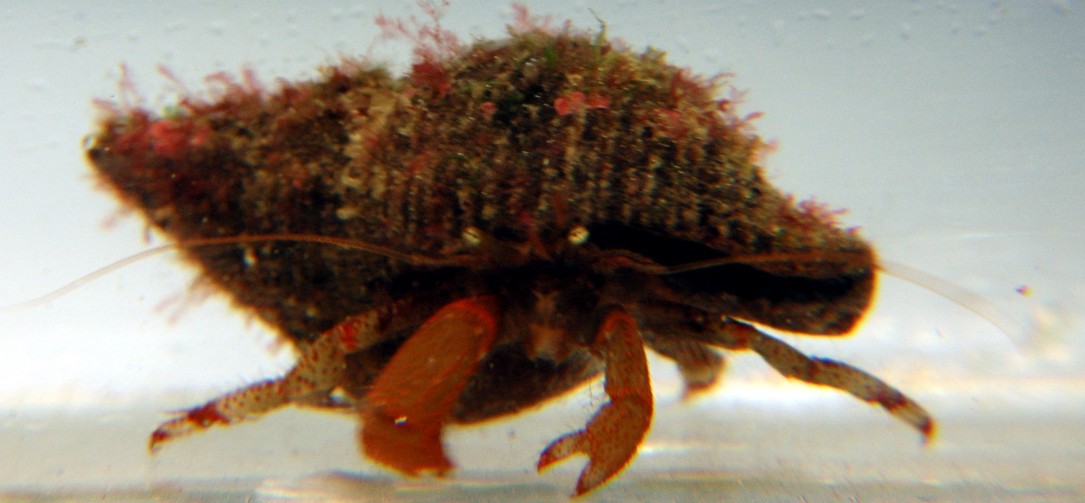Pagurus beringanus (Benedict, 1892)Common name(s): Bering hermit crab |
|
| Synonyms: Eupagurus beringanus, Eupagurus newcombei, Pagurus newcombei | 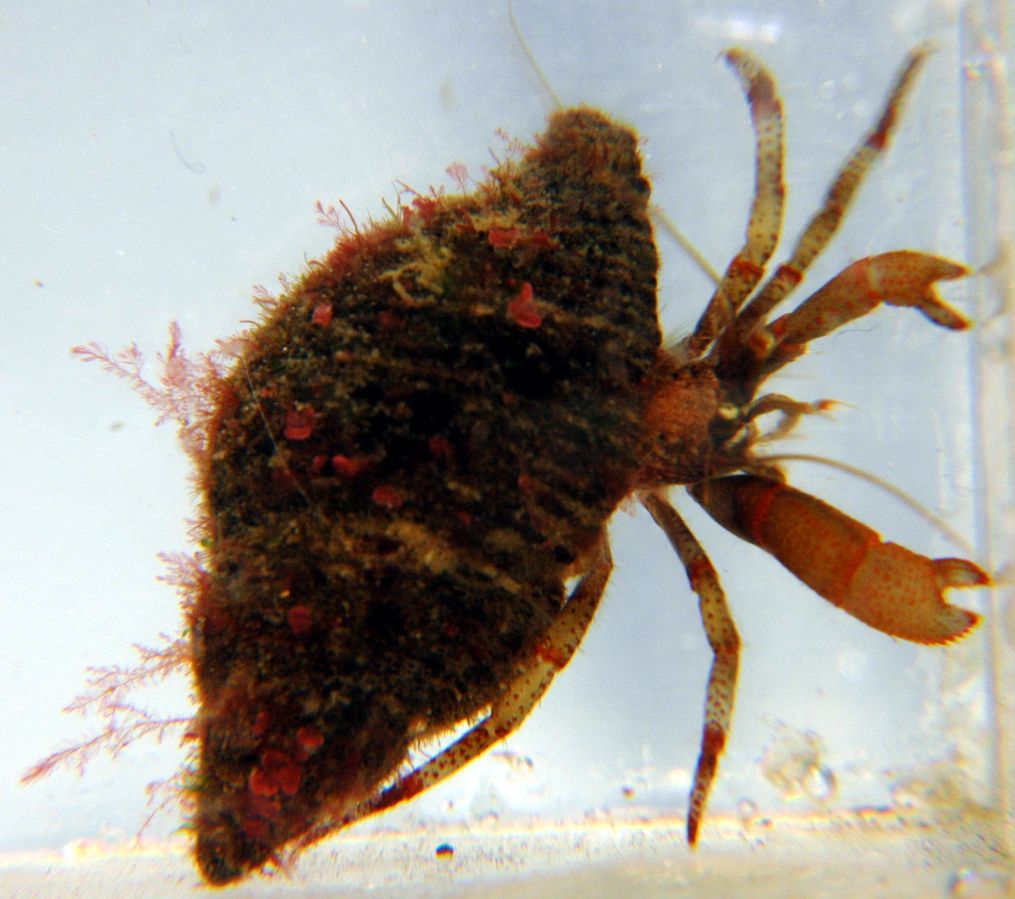 |
| Phylum Arthropoda
Subphylum Crustacea Class Malacostraca Subclass Eumalacostraca Superorder Eucarida Order Decapoda Suborder Pleocyemata Infraorder Anomura Family Paguridae |
|
| Pagurus beringanus, total length 2 cm, from extreme low intertidal on Sares Head | |
| (Photo by: Dave Cowles, July 2005) | |
How to Distinguish from Similar Species: Pagurus granosimanus has no spines or tubercles on the ventrolateral margin of the propodus of left leg 3, and the legs are olive-green with blue dots.
Geographical Range: Aleutian Islands, AK to Monterey, CA. Uncommon S of Point Arena.
Depth Range: Extreme low intertidal to 360 m. Mainly subtidal in California.
Habitat: Rocky areas, especially around large rock formations in partially protected waters.
Biology/Natural History: Tends to use large, heavy shells such as Nucella lamellosa into which it can withdraw completely. Sometimes found in a sponge. Predators include the rosylip sculpin Aschelichthys rhodorus.
| Return to: | |||
| Main Page | Alphabetic Index | Systematic Index | Glossary |
References:
Dichotomous Keys:Coffin, 1952
Flora and Fairbanks, 1966
Hart, 1982
Kozloff 1987, 1996
Smith and Carlton, 1975
Wicksten, 2009
General References:
Harbo,
1999
Jensen,
1995
O'Clair
and O'Clair, 1998
Ricketts et al., 1985
Sept,
1999
Scientific
Articles:
General Notes and Observations: Locations, abundances, unusual behaviors:
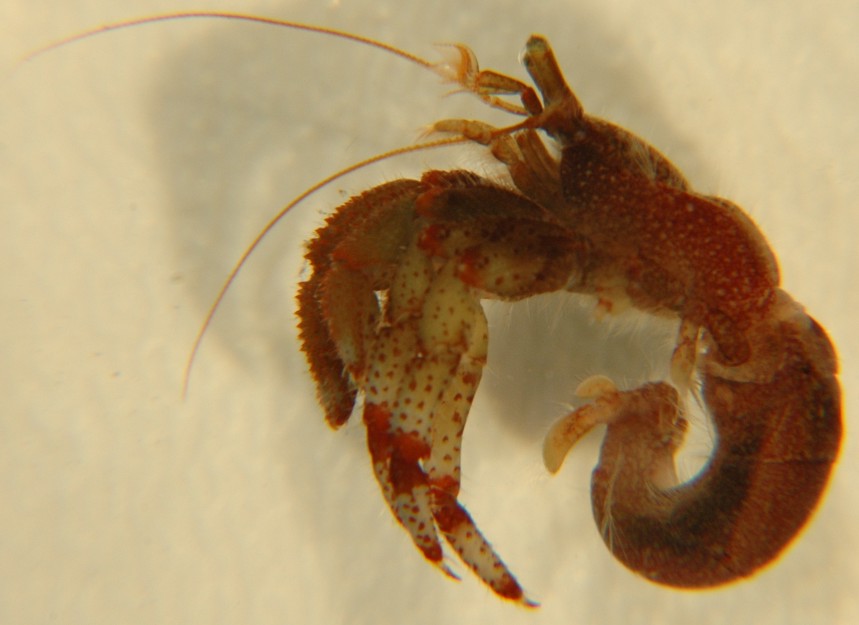
Here is a view of the animal outside its shell. Note the
large
uropods
at the end of the abdomen. Photo by Dave Cowles, July 2005
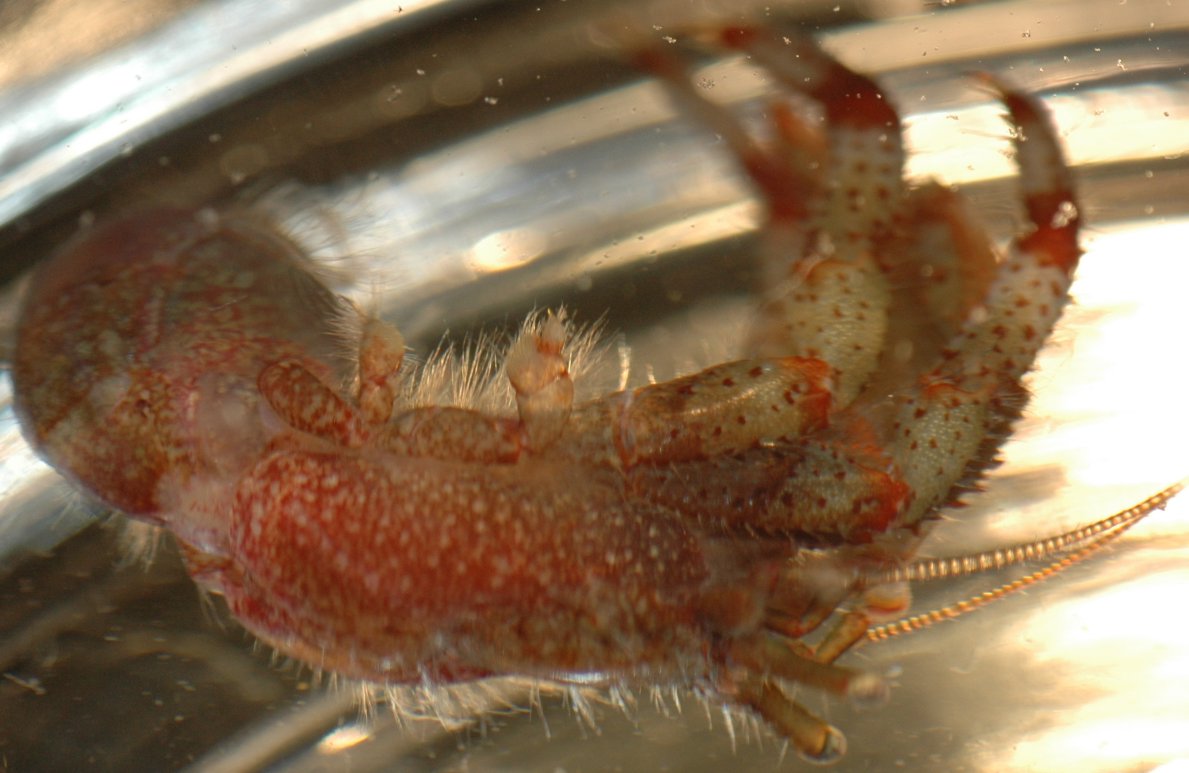
Legs 4 and 5 are reduced in hermit crabs, and in most of them leg 4
is subchelate, as seen here.
In the picture, leg 1 (the left chela) is partly hidden. Legs
2 and 3 are long and used for walking.
Legs 4 and 5 are reduced and used for manipulating the shell.
Photo by Dave Cowles, July 2005
The features in the following pictures are useful for
identifying this
species:
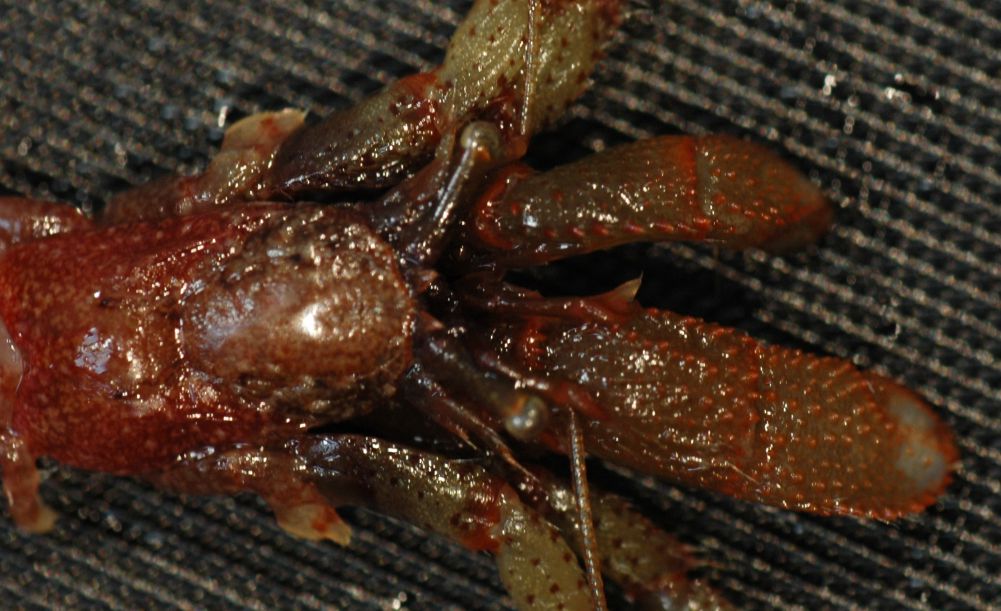
The carapace shield
(anterior, calcified part) is about as wide as long. The rostrum
is rounded. The eyescales
have no deep median
furrow and their base is not
covered by the carapace.
The carpus
of the right cheliped
is longer than wide. The dorsal surface of the left chela
has no prominent ridge near the midline.
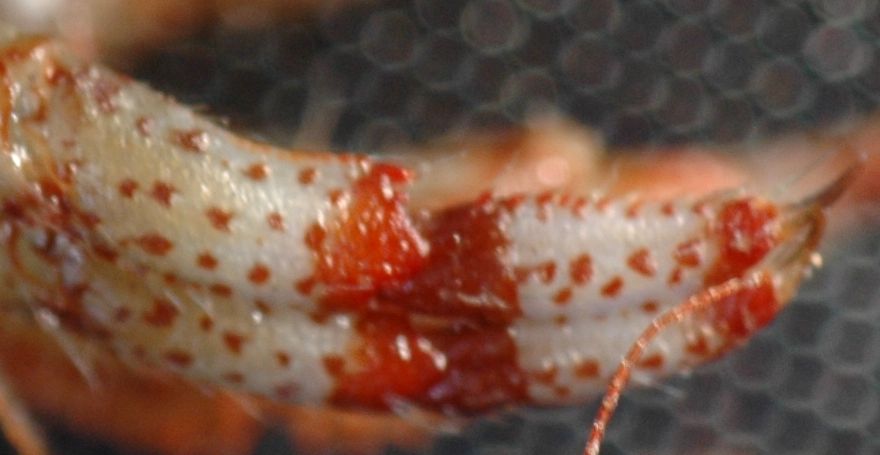
This is a view of the carpus,
propodus,
and dactyl
of
left legs 2 and 3 (+ a portion of the antennal flagellum).
Anterior is downward.
Note the line of spines easily visible on the posteroventral margin
of the propodus of leg 3, and the red band at the junction of the
propodus
and dactyl.

The merus
of the right cheliped
has two large tubercles
on the ventral side, visible here as orange spots. Anterior
is downward
in this photo.
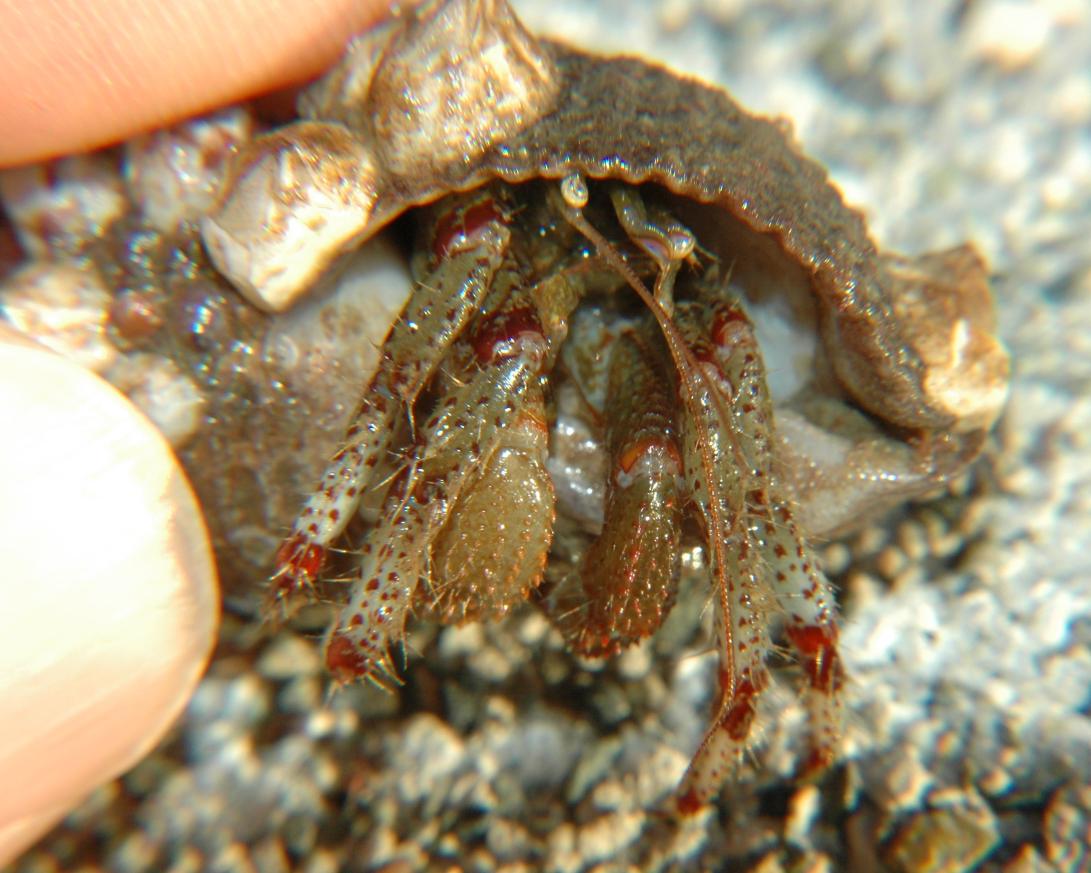
Here is another individual of Pagurus beringanus
Authors and Editors of Page:
Dave Cowles (2005): Created original page
